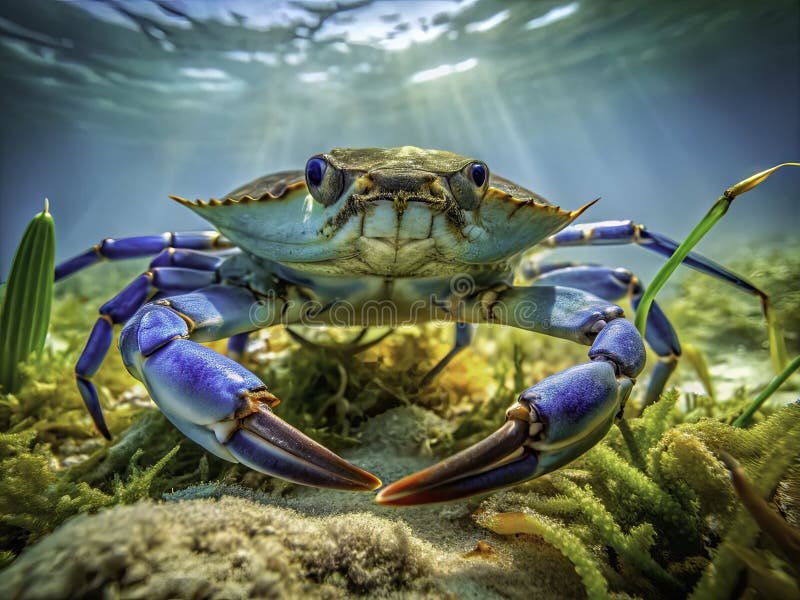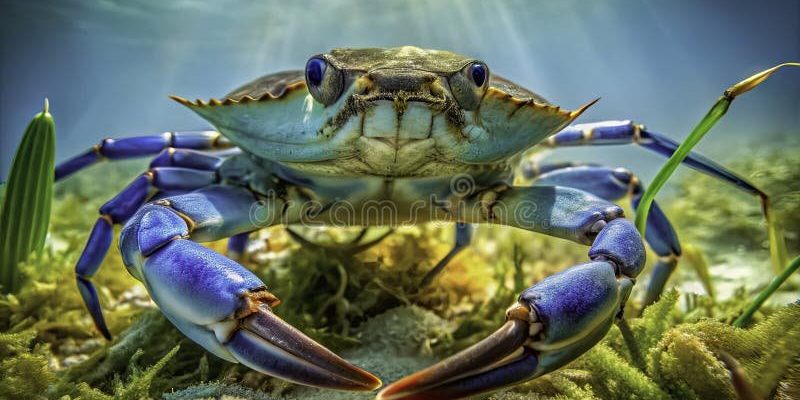
Blue crabs are delicious and resilient, making them a favorite among fishermen and seafood lovers alike. But their role extends far beyond just being a tasty delicacy. They act as both predator and prey in the food web, helping to maintain a balance in the aquatic ecosystem. In this article, we’ll dive deep into how blue crabs contribute to their environments, and why understanding their role is essential for our oceans’ health.
What are Blue Crabs?
Blue crabs, scientifically known as *Callinectes sapidus*, are found in the Atlantic Ocean and the Gulf of Mexico. Their blue claws and olive-green shells make them stand out, almost like they’re wearing a fancy outfit. These crabs thrive in estuaries, where freshwater meets saltwater, enjoying a habitat rich in nutrients.
Blue crabs start as tiny larvae and undergo several stages before becoming the adult crabs we recognize. They have a unique growth process, shedding their shells as they grow, which is called molting. Each time they molt, they not only increase in size but also change the color of their shells, showcasing a stunning transformation that few creatures can match.
You might be wondering about their diet. Blue crabs are omnivorous scavengers, munching on fish, clams, and even plants. This broad diet allows them to adapt to various environments and ensures they’re not picky eaters!
The Blue Crab as a Predator
One of the strongest roles blue crabs play in marine ecosystems is that of a predator. They actively hunt smaller fish and invertebrates, controlling their populations. This predatory behavior is crucial because it helps prevent any single species from overwhelming the ecosystem.
For example, if blue crabs didn’t keep smaller fish in check, those fish might overconsume the algae and phytoplankton, leading to algal blooms. Algal blooms can deplete oxygen levels in the water, creating “dead zones” where other marine life can’t survive. So, by being effective predators, blue crabs maintain the delicate balance of life in the waters they inhabit.
They’re not just mindless hunters, either. Blue crabs are clever and strategic. They use their excellent sense of smell to locate food, employing a mix of ambush tactics and active hunting strategies. This adaptability makes them formidable hunters in their environment.
The Blue Crab as Prey
While blue crabs are fierce predators, they’re also essential food for many marine animals, including birds, larger fish, and even sea turtles. Think of blue crabs as a kind of “fast food” for these creatures. They provide vital nutrition and energy, supporting higher trophic levels in the food web.
When you consider the entire food chain, blue crabs hold a unique position. If crab populations decline, it can lead to an increase in their prey, which then affects the animals that feed on those species. It’s a ripple effect in nature. By supporting so many different species, blue crabs enhance biodiversity in their ecosystems.
Moreover, the decline of blue crab populations often signals trouble in marine habitats. Environmental threats or overfishing can decrease their numbers, which then impacts not just their predators but the entire ecosystem. This interconnectedness shows just how vital blue crabs are to healthy aquatic environments.
Blue Crabs and Habitat Modification
Blue crabs aren’t just passive inhabitants of their environments; they actively modify their habitats. By burrowing into the mud and sand of the seafloor, they create structures that provide shelter for other marine life. This behavior helps increase the habitat’s complexity, which is beneficial for various organisms.
These burrows can serve as homes for tiny invertebrates and even juvenile fish seeking refuge from larger predators. In this way, blue crabs contribute to creating a more diverse and thriving ecosystem. Their digging also helps aerate the sediment, allowing for better water circulation and promoting healthier plant growth.
This habitat modification is a classic example of how one species can enhance the living conditions of countless others. You could say that blue crabs are like the unsung heroes of their underwater neighborhoods, making life better for those around them.
The Economic Importance of Blue Crabs
It’s hard to talk about blue crabs without mentioning their significant economic impact. They’re a vital source of income for many coastal communities involved in fishing and tourism. Whether it’s a backyard crab boil or a fancy restaurant dish, blue crabs are often at the center of culinary experiences.
Overfishing has led to stricter regulations to ensure that blue crab populations remain sustainable. Fisheries must balance demand with conservation efforts, highlighting the importance of responsible fishing practices. Supporting sustainable crab harvesting not only protects this delicious species but also helps maintain the health of marine ecosystems.
Additionally, educational programs around blue crabs foster awareness of their ecological roles and the need for conservation. By appreciating their economic value, we can also recognize their importance in maintaining biodiversity and the health of our oceans.
The Threats to Blue Crab Populations
Despite their importance, blue crab populations face several threats. Overfishing, pollution, and habitat loss due to coastal development all pose serious challenges. If these pressures continue, we risk destabilizing marine ecosystems that depend on the balance blue crabs provide.
Pollution, in particular, is a significant issue. Chemicals and waste can affect water quality and harm the delicate habitats where blue crabs thrive. Stormwater runoff can introduce toxins into their environments, further complicating their survival and health.
To advocate for blue crab populations, we need to support sustainable practices and conservation efforts. Simple actions—like reducing plastic use and supporting local fishing regulations—can make a difference. Protecting blue crabs means protecting the entire marine ecosystem they help to uphold.
Blue crabs are more than just a tasty seafood option; they play a vital role in maintaining the health and balance of marine ecosystems. From their role as predators to their contributions as prey and habitat modifiers, blue crabs illustrate the interconnectedness of life in our oceans.
Understanding and appreciating their importance can lead to better conservation practices that protect not only blue crabs but the entire marine environment. As stewards of the ocean, it’s our job to ensure these amazing creatures continue to thrive for generations to come. Whether you’re enjoying a crab feast or simply admiring them in the wild, remember that blue crabs are a key ingredient in the recipe for a healthy ocean.

